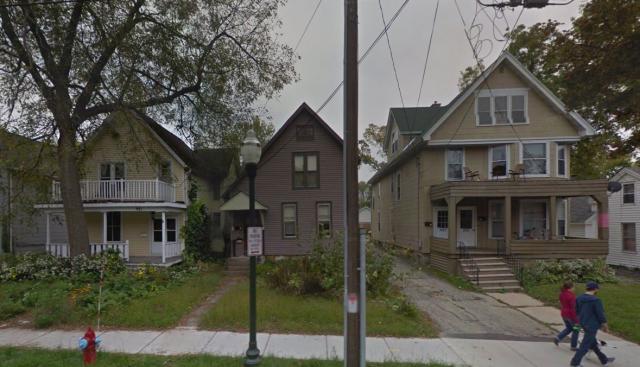






 Building Madison to be bike and bus-friendly will keep middle-income residents in the city (Mike Barrett)
Building Madison to be bike and bus-friendly will keep middle-income residents in the city (Mike Barrett)
The Bus Stops Here is produced monthly by members of the Madison Area Bus Advocates
Cities including Madison are undergoing a renaissance despite having the same generation of planners and politicians who oversaw the last 60 years of sprawl and car culture at the helm. We see signs of a booming housing market everywhere – vacant lots getting filled in, strip malls getting replaced by multi-story mixed-use developments and more. It may thus be difficult to believe that Madison actually faces a housing shortage in which supply and demand are out of whack, in which many in the middle class are being driven into neighboring communities that have no transit but need it. The ostensible reason is that they cannot afford Madison’s housing, and close to half the City’s employees do not live in the city itself. Yet it is the City of Madison that has the major transit system, a vestige of an earlier day when most people walked, and/or used mass transit to move around.
Much of the so-called “‘development” we see is actually the conversion of lower-cost housing or shops into higher-end rental housing units and retail outlets, not what a middle class with more modest means either wants nor needs. This drives away people who cannot afford the higher prices. What Madison needs more of is what is sometimes called the “missing middle” – duplexes/triplexes, townhouses, co-ops and condominiums – transit-friendly and affordable housing that working people can own and that is fairly close to work, school, shopping and community centers.
The American Dream that society benefitted from used to include owning a home, a process often begun sometime in one’s younger years (roughly 25-34) with the assistance of a federal policy that enabled home buyers to deduct mortgage interest from their income taxes. Becoming a homeowner often began with a “starter home,” one in which the owner lived in one section, rented out one or two rooms or other “plexes” in the same building, and maintained the whole thing. In fact, such arrangements are common in countries of Western Europe.
Such an arrangement was made illegal by Madison’s zoning code of 1966 however when swathes of neighborhoods could only host single-family detached houses and many people were expected to move out to the suburbs. The prohibition has recently been lifted for Madison in general, but still persists in specific neighborhoods most likely to have and benefit from additional multi-family units. Some of that housing still exists in those neighborhoods based on conversions that took place before they were made illegal but there has been little addition to such housing stock for decades; what exists now may be quite old, while nothing new of that nature can be built.

Unfortunately, what was a sensible arrangement suited to the needs of different demographics was often distorted by “absentee landlords” who did not maintain properties, either intentionally or because they did not know when something started to malfunction. Adding to the predatory behavior, real estate agents would often avoid even showing certain neighborhoods to prospective buyers. What ensued has sometimes been called “urban decay.”
In a half-hearted about face, the city is now trying to encourage owner-occupancy in downtown neighborhoods by having a rehabilitation program that provides special financial assistance to owner-occupants and groups such as the Green Apartments Network are trying to reinforce the idea that multi-plex housing can be valuable and should be maintained. Currently, those who would build high-rise apartment buildings know the value of the land as well, so current housing stock may be priced out of reach of first time homebuyers. Redeveloping the housing by first-time homeowners is also “limited by zoning, demolition, and subdivision rules that can hinder middle sized development” Furthermore, the lending market can discourage the ownership of such alternative structures as condominiums and cooperatives (another story).
Whereas some developers are proposing 10-plus-story behemoths, hiding their greed behind the argument that they could not afford to build fewer stories, the “missing middle” can be more dense and transit-friendly than detached single-family home but need not be crowded. “Dense” means “compact” whereas the idea of crowding suggests going beyond a comfort level. Neighborhoods often limit new structures to three or four stories. “Done right, a missing middle unit shouldn’t look all that different from a single family home ... the only giveaway [being] ... the number of mailboxes out front.” They are part of a human-scale neighborhood that thrives on good transit and a healthy but modest middle class. Madison needs more “missing middle” housing.
|
|
|
Welcome to the Madison Commons, a website designed to provide news and information about all of Madison's neighborhoods and a crossroads for the discussion of community issues. The name comes from the idea of a village commons, a place for news, talk, debate, and some entertainment, too, that's open to everyone.
All rights reserved. Read more about the Madison Commons and its partners.

